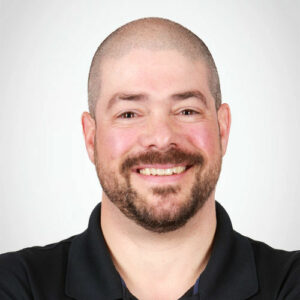In a recent Forbes Business Council article, the author astutely observes, “Had the pandemic lasted just six weeks, we might have made temporary changes to our behavior and then returned to our old familiar ways.” That statement is true for personal habits like hand washing and social distancing, and also for retail processes like online ordering and no-touch technology. The much longer duration of the pandemic has ingrained these practices and many more as permanent.
While the retail world was already in a transition phase prior to 2020, the pandemic accelerated it, often for the better. For example, companies that already had ecommerce functionality enhanced it, providing greater convenience and attracting more customers to those sites. Retailers that didn’t have delivery or curbside pickup rushed to add it, giving customers no or low-contact ways to get the supplies they needed. Though the pandemic is waning, these offerings are here to stay.
Retail has permanently shifted in several ways. In the sections below we explore these various areas and the benefits they’ve brought to both retail companies and the customers they serve.
Consumer Habits
Prior to the pandemic, grocery pickup and delivery services were available. But the need for social distancing expanded this practice, and not just for groceries. Retailers of many types set up or expanded their curbside pickup options. To support and enhance those options, companies improved their web and app-based interfaces as well. The combination of these offerings prompted customers to develop loyalty to the companies that did it best and to begin to see these shopping options as the norm.
The need for social distancing and reduction in in-person shopping also prompted retailers to quickly implement or improve their digital offerings. For example, many upgraded their ecommerce sites and added voice-enabled, self-service, or automated features and shifted to omnichannel customer communications. For example, customers gained the ability to start an interaction via chat, end the chat session, call, and have the chat information available during the call.
Companies that performed these actions continue to thrive. For example, according to a recent Forbes Technology Council article, delivery service DoorDash improved its service with the use of data and smart partnerships with companies like the pharmacy CVS, which wouldn’t ordinarily offer delivery.
Digital Transformation
Another element in the success of DoorDash was a digital transformation strategy that helped to improve its customer experience (CX). Amid quarantines and lockdowns, other companies followed a similar path, shoring up their digital offerings. They include AI-driven solutions like knowledge management, which enables call center agents to provide better-quality information to customers and reduce agent errors. AI is also helping retailers better track browsing and purchase history to provide better recommendations for additional products.
Other digital innovations include no-touch options, such as stores that enable customers to put items into their basket, then check out through an online system, rather than having cashiers. The following video shows a walk-through in this type of environment.
While this type of system is still rare, the use case has expanded greatly as consumers have become more careful about touching objects and close contact with others. Given that many consumers miss shopping in stores, such a model is a good way to bring back in-store shopping in a way that’s informed by what we’ve learned since 2020.
Supply Chain Strategies
Supply chain issues that occurred during the pandemic showed everyone how fragile the supply chain infrastructure is. Retailers realized they couldn’t necessarily count on the same suppliers in all situations and made moves to find alternative vendors. Some also took advantage of artificial intelligence (AI) systems for helping them track supply chain status in real time and predict possible disruption.
Interestingly, less well-known brands also benefited from supply chain issues in that customers who were unable to purchase their usual, more popular brands tried something different. Often, those new products became their new go-to.
Hybrid Arrangements
Just as offices are discovering the benefits of a hybrid work arrangement — including health, flexibility, and employee satisfaction — retailers and their customers are discovering the benefits of hybrid shopping. For example, many big retailers are expanding their buy-online-pick-up-in-store (BOPIS) model so customers don’t need to spend much time at these locations.
Retailers are also taking advantage of lockdown-enforced at-home time, which led to more social media use on platforms that can promote product discovery. Technologies that enable buying directly from these platforms make it even easier for retailers to highlight and sell their products.
Brands Take a Stand
The year 2020 will be remembered not just for the start of the pandemic, but also for protests related to the Black Lives Matter movement. As this social issue and others have become more prominent in the culture, consumers increasingly want to know where retailers stand. Consequently, retailers are publishing and promoting their stance on matters ranging from race relations to climate to gay rights. These efforts have the potential to attract new customers and increase loyalty with those who stay.
That Which Doesn’t Kill You…
Many industries, such as hospitality, suffered greatly during the pandemic. While the companies there did everything they could to survive and even thrive, the weight of current conditions simply proved to be too heavy for many businesses and a lot of them, unfortunately, are no longer around.
Many retailers also didn’t make it, but many others did. Those that did were forced to implement changes that have served them well, including added services, better customer care, and a higher level of convenience, proving the old adage, “That which doesn’t kill you makes you stronger.”
These upgrades would have been wise moves without the pandemic, but in those circumstances, they might have been viewed as nice-to-haves that never got off the ground. The pandemic served to push these upgrades to the must-have column and propel those companies to become best-in-class.






